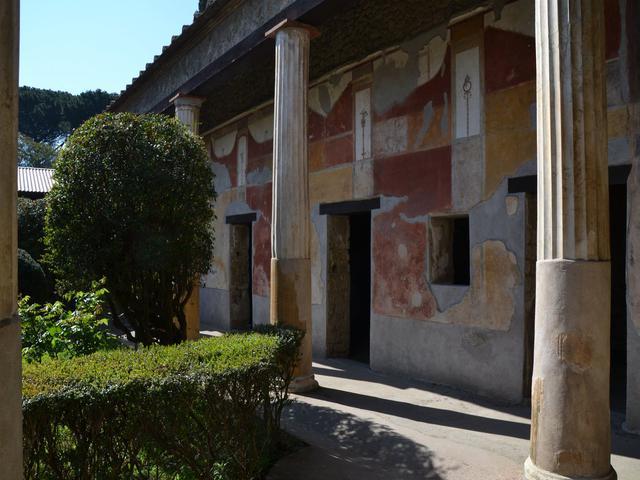House of Venus in the Shell

The House of Venus in the Shell is a remarkable point of interest located in the ancient city of Pompeii, Italy. Situated on Via dell'Abbondanza, this house is also known as the House of D. Lucrecia Satrii Valentes. It holds a fascinating history, as it was still undergoing restoration when the catastrophic eruption of Mount Vesuvius occurred in 79 AD. The excavation of this site took place between 1933-35, but unfortunately, it suffered damage during World War II in 1943 due to bombing raids. However, the House of Venus in the Shell was re-excavated and meticulously restored in 1952, allowing visitors to marvel at its beauty and historical significance.
Upon entering the House of Venus in the Shell, visitors are greeted by an impressive atrium adorned with intricate decorations. On the north side of the atrium, there are two cubicles that have lost most of their original embellishments, showcasing the passage of time and the impact of various events on this ancient structure. A third cubicle on the southeast corner of the atrium is decorated in the third style, featuring white framed panels with fantastic architectural views and a faded mythological scene of Hermes and Dionysus. The walls are adorned with portrait medallions and floating figures, offering a glimpse into the artistic and cultural richness of Pompeii.
Moving through the house, visitors will discover a door leading to adjoining workshops and the triclinium, a dining room with a vaulted roof. The triclinium is decorated in the third style, featuring architectural themes framing black panels with floating figures and small scenes. The south side of the atrium opens onto the peristyle, enclosing an internal garden on three sides. The portico boasts fluted columns of stuccoed brick, while the walls are adorned with large red and yellow panels containing architectural scenes and still lifes on a lower black frieze.
One of the most striking features of the House of Venus in the Shell is the large frescoes on the rear wall of the peristyle, which give the house its name. These exquisite frescoes depict the goddess Venus emerging from a shell, surrounded by intricate details and vibrant colors that have stood the test of time. The House of Venus in the Shell offers visitors a unique opportunity to immerse themselves in the art, architecture, and history of ancient Pompeii, providing a glimpse into the daily life and cultural richness of this once-thriving city.
© ChatGPT 3.5